This post may contain affiliate links. By clicking and making a purchase through the links, I earn a small commission at no extra cost to you. See my disclaimer for more information. This and display ads allow me to keep the site up to date and give back.
If you’ve ever asked yourself what to bring on a day hike, you’re in the right place! While it might not seem like you need much if you’re going on a short day hike, it’s important to be prepared to be out in the woods longer than expected.
The weather could turn, you could get lost or hurt, or the hike just may take longer than planned. While it’s unlikely these things will happen, you don’t want to find yourself in a situation where you don’t have the right hiking essentials with you. This day hike packing list will make sure you’re prepared for anything! I’ve also included a printable day hike checklist to make sure you don’t forget any items on your next hike.
Can’t read this right now? Pin it for later!

10 Essential Things to Pack for a Day Hike
These day hike gear items are recommendations based on the Ten Essentials, which is a list put together by The Mountaineers club of Seattle for safe travel in the backcountry.
Hydration
Water is one of the most important things to bring on a day hike. But how much water do you need? That really depends on the climate you are in and the difficulty/length of your hike. On most of my day hikes, I bring 2L and that is often more than enough. If you are doing a strenuous hike in a hot climate, you’ll need to bring more water to compensate for what you loose sweating.
On any day hike, you should bring something that can purify a water source around you in case you run out such as a Steripen. This can also be a good way to cut down on weight by not having to carry all the water with you. If you don’t want to invest in a water purifier, you can just buy water purification tablets.
If you are going on a lot of day hikes, I highly recommend investing in a hydration pack. It makes staying hydrated while hiking so much easier. I know drinking from water bottles doesn’t seem like that difficult a task, but when you have to get it out of your bag constantly and unscrew the cap, it genuinely becomes a nuisance.
With a hydro pack, you have the water right there anytime you need it on the hike. Since getting this Osprey 2L Hyrdration pack I drink way more water while hiking. Water is one of the most important things to bring on a day hike!
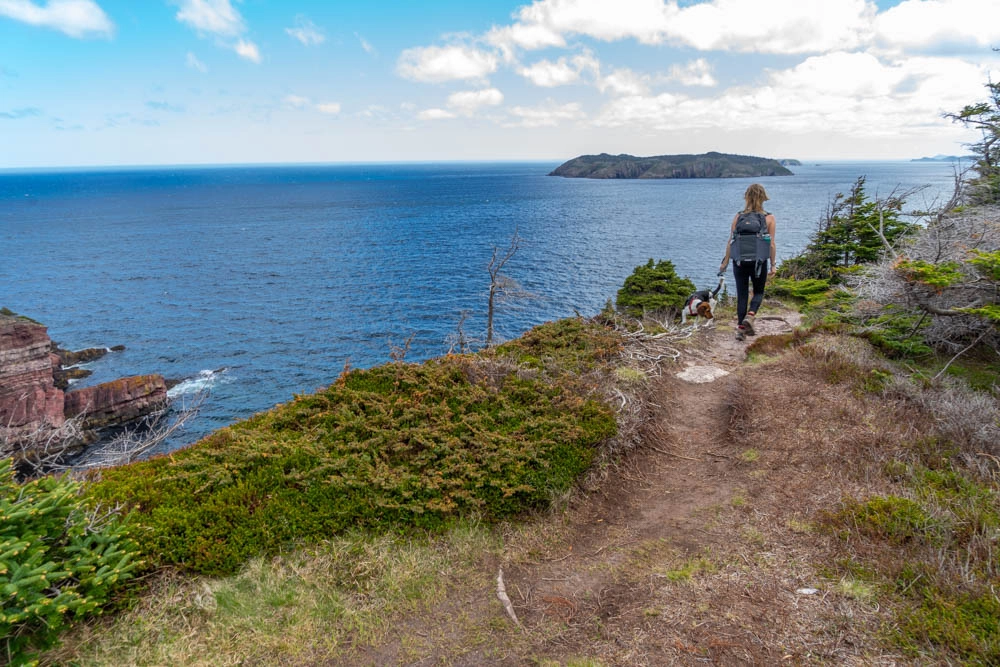
Food
Snacking may be one of my favourite parts about hiking. Did you know that hiking can burn up to 500 calories an hour?! Just one of the many amazing benefits of hiking! Hiking brings your heart rate up and works your entire body, which kicks your metabolism into high gear. That’s great and all, but in order to make sure you have enough energy to keep hiking, you need to refuel your body! Always pack more food then you think you need for a hike.
Again, the amount of food you need to pack for a hike will depend on the difficulty of the hike and your overall fitness level, but as a general rule of thumb you’ll want to pack an extra days worth of food. Snackers rejoice!
Being able to snack so much is one of my favourite parts about hiking, but it’s important that you replace those calories with high-quality food that will help sustain you through the hike. Since you’ll be carrying all that weight, that will factor in to what you want to bring.
Some great snacks for hikers are cliff bars, fairtrade chocolate, moon cheese, dried fruit, freeze dried meals, and trail mix.
Sun protection
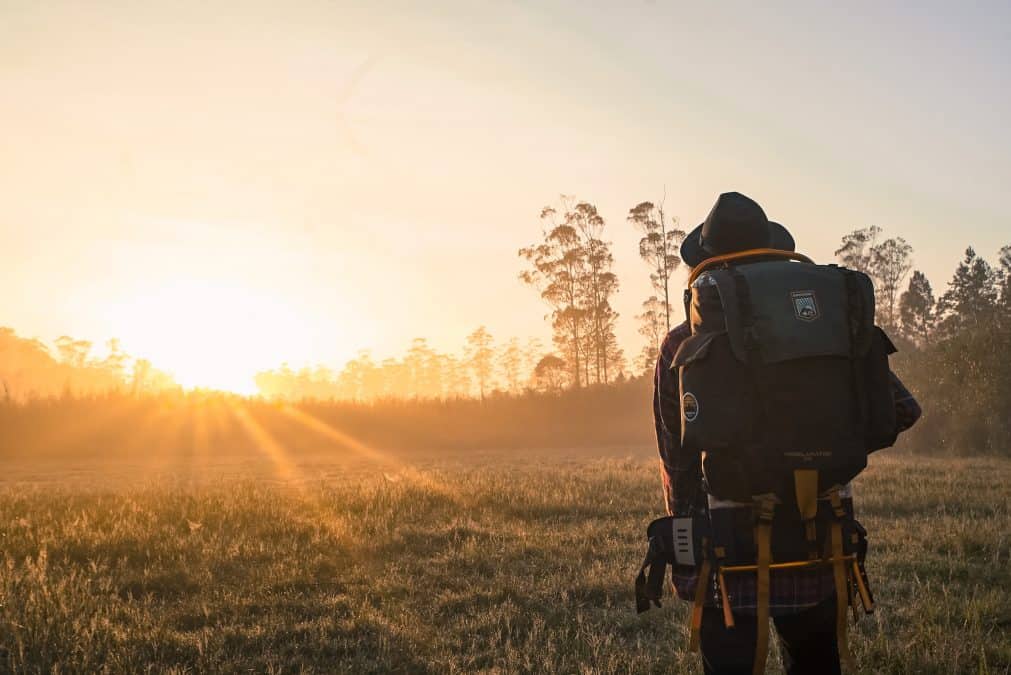
As much as I love the sunshine, you really need to protect yourself from it. It’s not enough to put sunscreen on before you leave for a hike. You need to keep it in your pack so you can reapply.
For every hike, make sure you have sunscreen, SPF lip balm, a brimmed hat, and Sunglasses with UV protection.
I never thought I’d be into ball caps, but have recently started loving them on my hikes as they keep my hair out of my face! Patagonia has some really cute ones.
Clothing can also be an effective way of blocking out sun rays without having to coat yourself in sunscreen. Many synthetic clothing comes with a UPF to indicate how effective they are against the sun such as this sunshirt.
First Aid
Always carry a basic first aid kit with you when you go hiking, and know how to use it. If you don’t know what to put in a kit, you can buy a pre-assembled one.
The first aid kit should include treatments for blisters and splinters, bandages, gauze pads, antibiotic ointment, nitrile gloves and over the counter pain medication. This isn’t a necessity, but if you are prone to blisters you can take blister balm with you.
Rehydration salts are another item you may want to put in your day hiking gear. If you are in a hot climate and not drinking enough water, you risk becoming dehydrated. It’s an extremely unpleasant feeling that can make you nauseous and weak, and rehydration salts can help you recover quickly.
You should also carry insect repellant with you, because bugs can be relentless in the woods, especially at dusk. It’s also a good idea to bring treatment for bug bites such as Afterbite or this Zapit Mosquito bite relief.
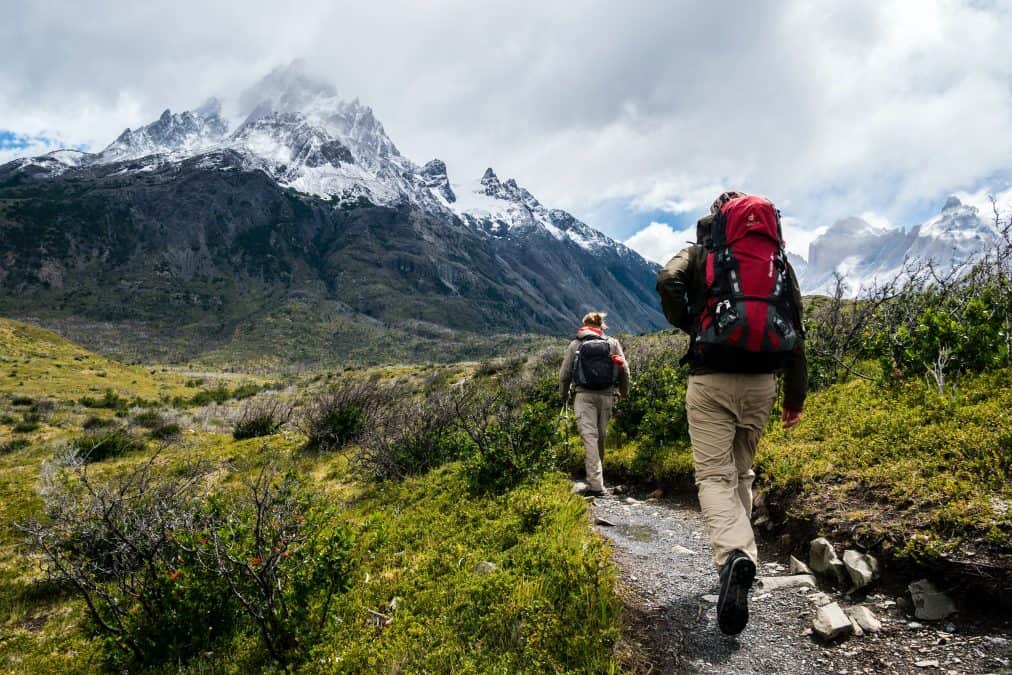
Light – Headlamp
It may seem silly to bring a headlamp with you on a day hike, but this is actually extremely important. While out in the woods, anything could happen. 99.9% of the time you’ll be perfectly fine and will get back to your starting point in day light, but do you really want to be stuck outside in the woods for that .1% chance without a light?
DO NOT count on your phone as a source of light. Photo batteries die quickly, especially in the woods when they are searching for reception. And once you start using it as a flashlight, it will drain even faster. It’s so important to bring a headlamp, and a spare battery! It could save your life.
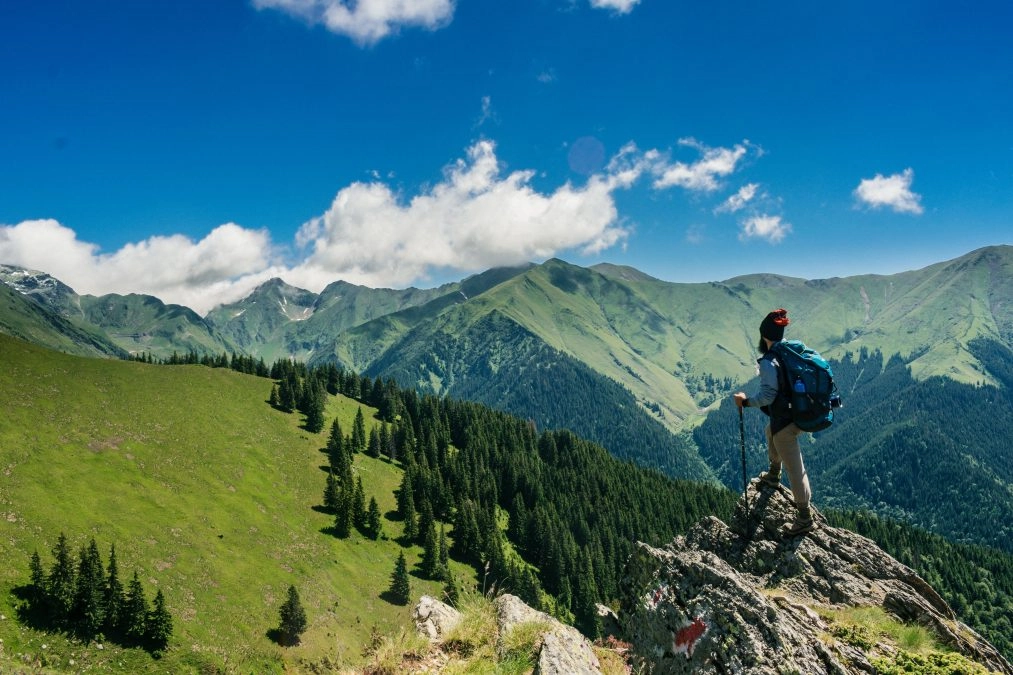
A pocket knife
A pocket knife is helpful for so many things while hiking including first aid (cutting gauze and tape), cooking, fixing gear, making kindling, and emergency situations. A swiss army knife is a lightweight item with so may purposes, so make sure to bring it! This also makes a great gift for a hiker.
Navigation: What to Bring on a Day Hike
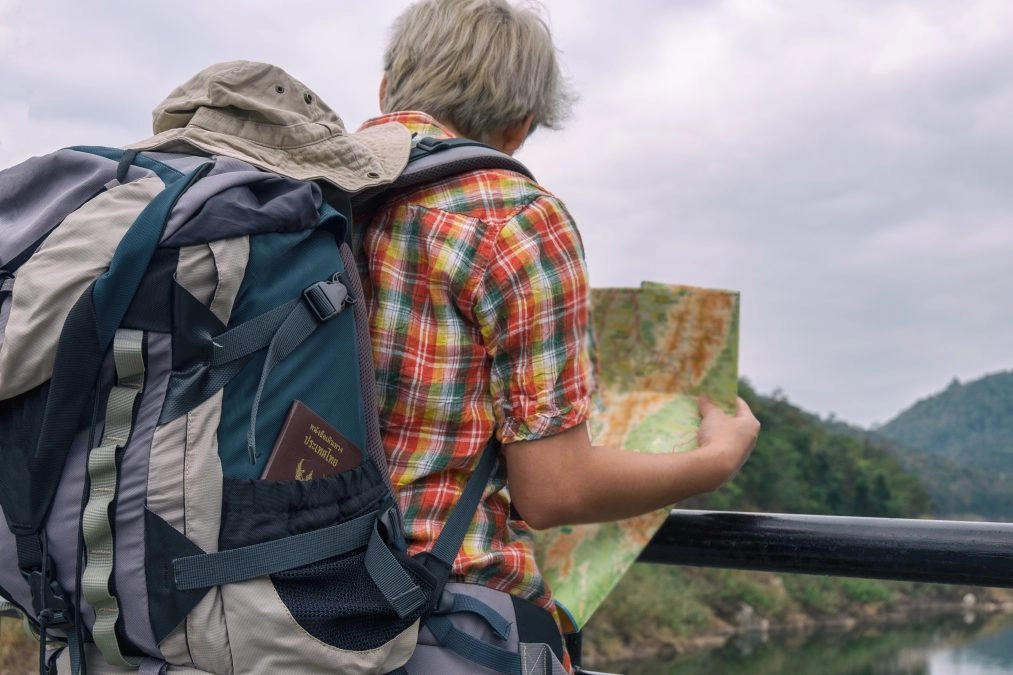
One of the most important things about going on a hike is being able to navigate where you are going. Depending on the length of the trail and where you are going, this may be a map, compass, altimeter, GPS device, or personal locator beacon (PLB). Of course, the most important thing is you know how to work the navigation.
Smartphones have come along way and apps like Alltrails make it very easy to follow trails. However, not all hikes are listed on the app and they won’t work offline without buying the premium version of the app (which I do recommend). Another problem with phones is that they can die on you.
It’s always a good idea to have a backup plan. Bring a map of the area or invest in a GPS. At the very least, bring a compass with you. This one is small, clips on to your bag, and even has a thermometer.
Safety – Fire & Communication
You’ll want to bring something that can help you make and retain a fire, in case you get stuck outside and need to stay warm. The easiest thing to bring is a lighter, although waterproof matches can also work. Put them in a waterproof container to be safe. Another option is to bring a Fire Starter Kit.
In an emergency situation, you may need to call for help. Your phone may work, but there’s a good chance you won’t have signal. If you are hiking in a really remote area, it’s a good idea to bring a satellite responder with you.
At the very least, bring a safety whistle with you in case you need to signal for help. Your voice will begin to weaken the longer you call for help, but the whistle won’t give out. This is also a great safety item to bring backpacking, especially as a solo female traveler.
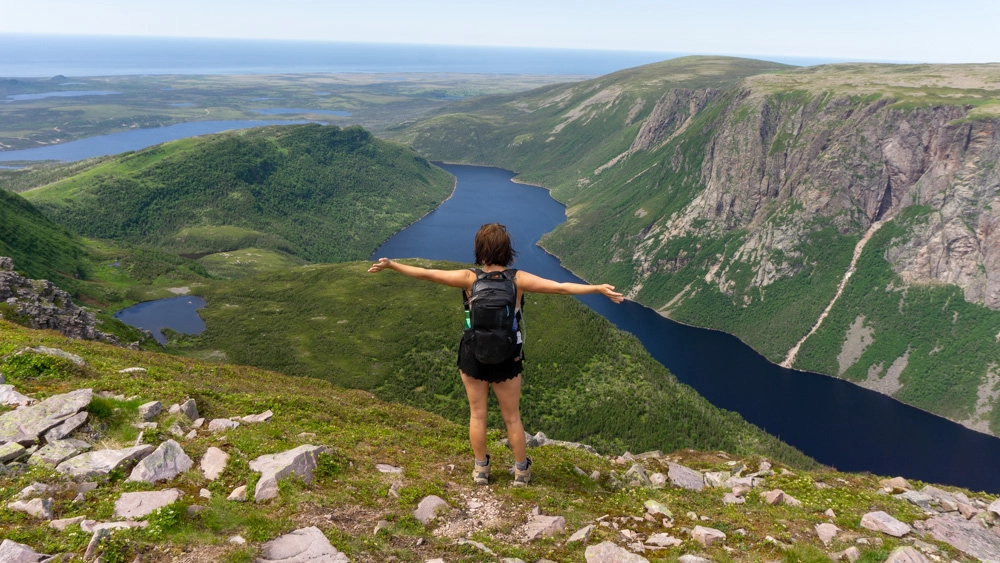
Emergency Shelter
You should always pack some type of emergency shelter in your day hike gear to protect you from the wind and rain in case something happens on the trail and you are out there longer than expected. This is nature, and the elements can change quickly. Examples of emergency shelters are a space blanket, an extra large garbage bag, an ultralight tarp, or an adventure emergency blanket.
Layers
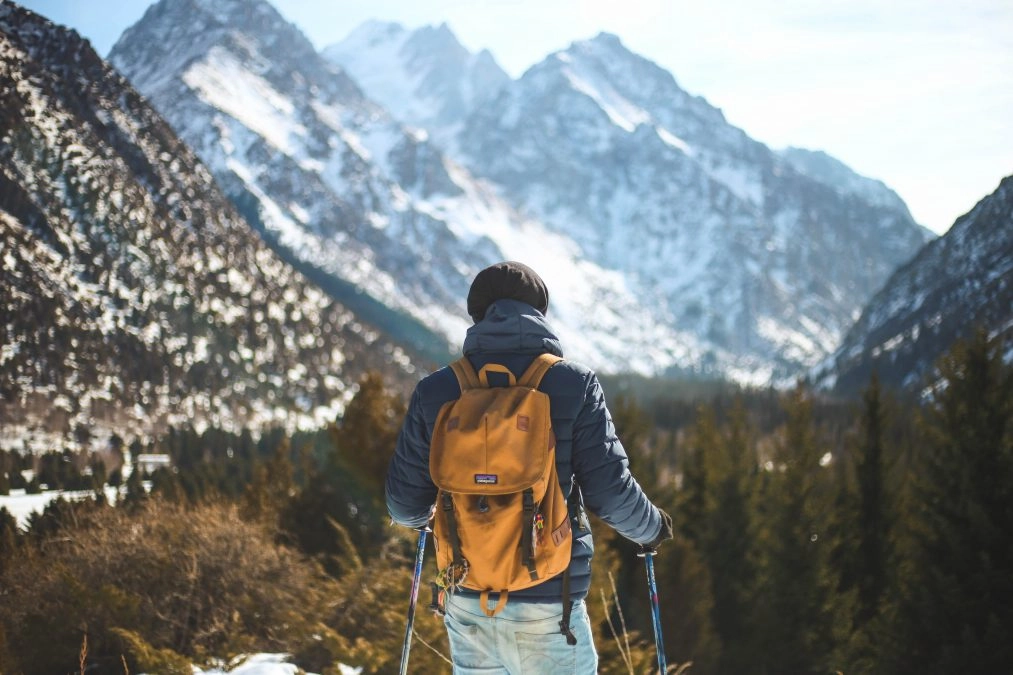
It’s crazy how fast the temperature can change, especially if you are hiking in the mountains or in a desert. But even in places like Newfoundland, it can change quickly. Bringing extra layers is the best way to deal with these changes in temperatures.
I can’t tell you how many times I started a day hike in my shorts and tank tops and then found myself absolutely freezing by the end of it. Also, if you get lost or injured, you may need to spend a night out in the woods so having extra clothes to keep you warm and dry will be essential.
The clothing you bring will depend on the climate you are hiking in. I’m writing a post all about what to wear hiking, so stay tuned for that. In Newfoundland, I usually hike in workout/yoga pants, hiking pants, or shorts, and a tank top. I always bring a warm sweater with me, along with a rain jacket. It’s also extremely important to wear a comfortable pair of hiking boots. I love merrells!
If you are hiking in colder climates or in the mountains, merino wool layers are key, as well as warm lightweight jacket like this Patagonio nano puff. You may also need insulating hat, gloves, scarfs. I really like buffs, they are a multifunctional piece of headwear that can be used as a scarf or to protect your face. This saved me while hiking in Yellowknife last winter!
It’s also a good idea to bring an extra pair of socks when going on a hiking trip. I love smart wool socks. You may step in a puddle or stream and get yours wet, and they can also double as mittens in an emergency.
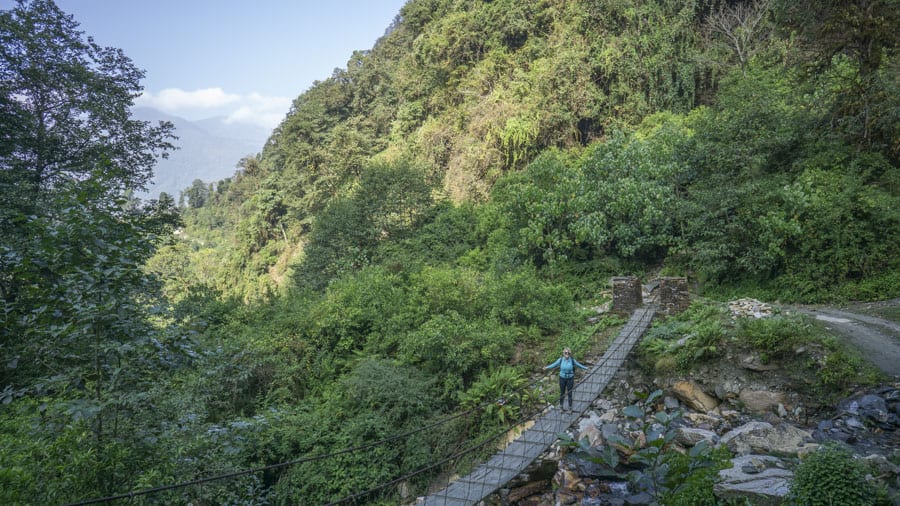
Beyond the Essentials: Day Hiking Gear
This day hiking gear list items aren’t part of the 10 essentials, but are some other helpful things you may want to bring on a day hike.
A mask due to COVID regulations. Thankfully, hiking is one of the safer things to do during this time and many governments are actually encouraging it. However, masks are mandatory or encouraged in many places so you should always bring one with on your day hike.
While you may not need to wear a mask on the hike (make sure you check your local government rules), you will likely need it if you plan to make any stops in stores before or after the hike. Having a mask can also help you if you need to walk through a really dusty area!
You don’t need a medical grade mask. These cotton masks from Rush Order Tees are perfect. They are super lightweight (4.2 oz) designed to stretch around your face (there are holes for your ears). I keep mine in my pocket and use it while going into stores, and it has been working great for me. As a bonus, a portion of the proceeds from the sals of these masks are donated to support the Philly Pledge COVID-19 Relief Fund.
Hand Sanitizer – Even before the pandemic this was a useful item for hiking, as you likely won’t have access to a bathroom with running water.
Toilet paper – Self-explanatory. Don’t leave it in the woods! Put it in a bag and take it back with you. Nature doesn’t need any more garbage.
Bear Spray – If you are hiking in areas with bears it’s a good idea to carry bear spray with you. Keep it in the side pocket of your bag for easy access.
Reusable bag – One way to give back to the earth on your hike is to pick up trash you see along the way. I bring a reusable bag so I can pick up any garbage I find along the trail, or for my own garbage.
Trekking Poles – Trekking poles can be extremely helpful while hiking, especially while going down steep terrain.
Solar Battery Bank – your phone will likely be your primary form of communication, so you don’t want it to die on you. Phones tend to drain quickly while they are searching for signal, so it’s a good idea to put it on airplane mode when you aren’t using it. I like this solar battery bank because it can charge again using the power of the sun.
A camera to document all the amazing views! I’m obsessed with photography so I always bring my Sony A7ii + GoPro and Mavic Mini. You can learn more about my photography gear here.
Carrying Day Hike Gear
You’ll want a comfortable day pack to carry all of these items in. A 15-30L bag is a good size that will fit all of these items. I’m a big fan of Osprey packs, many of which have built in hydration packs.
Keep all of your hiking gear in the bag so you don’t need to look for them each time you go on a hike. I just keep mine in my bag so I can easily get out the door!
—
I hope this post could give you some good ideas of what to bring on a day hike! When I started hiking I wasn’t bringing half of these items, but having been in various situations now I can see how important all of them are. If you have any questions about hiking gear, just let me know in the comments below.
Happy hiking!
Enjoyed this post? Pin it for later!



Leave a comment